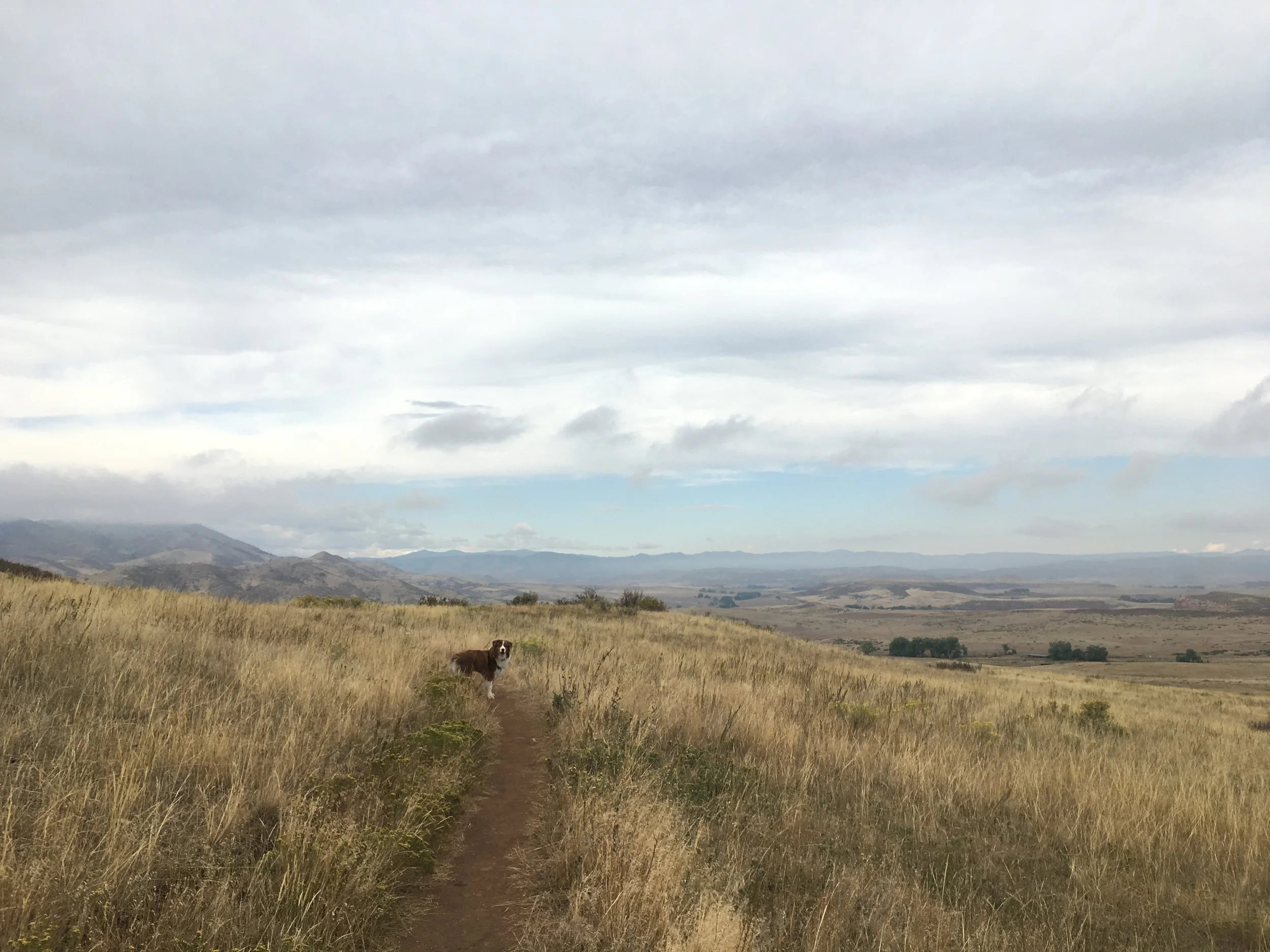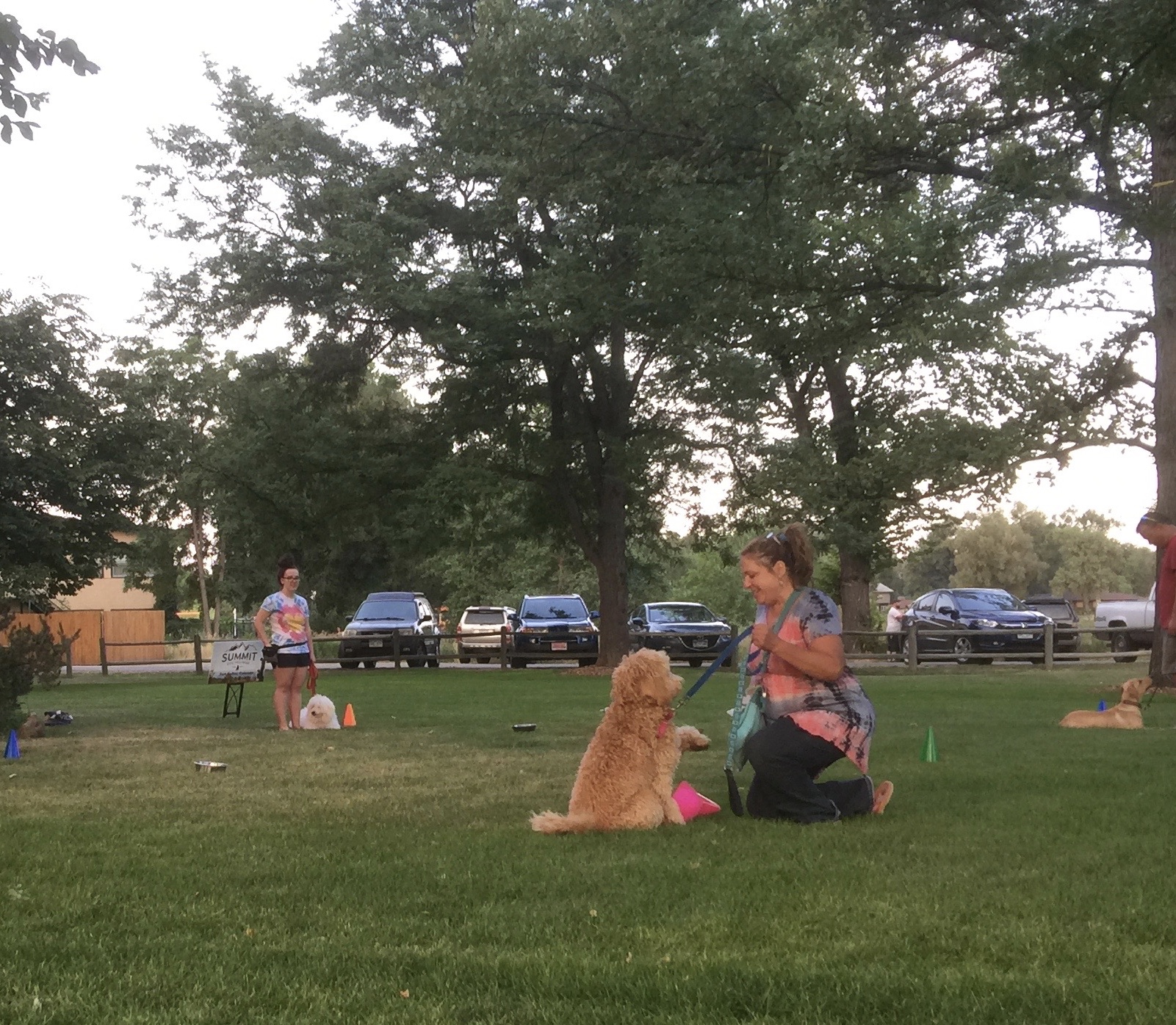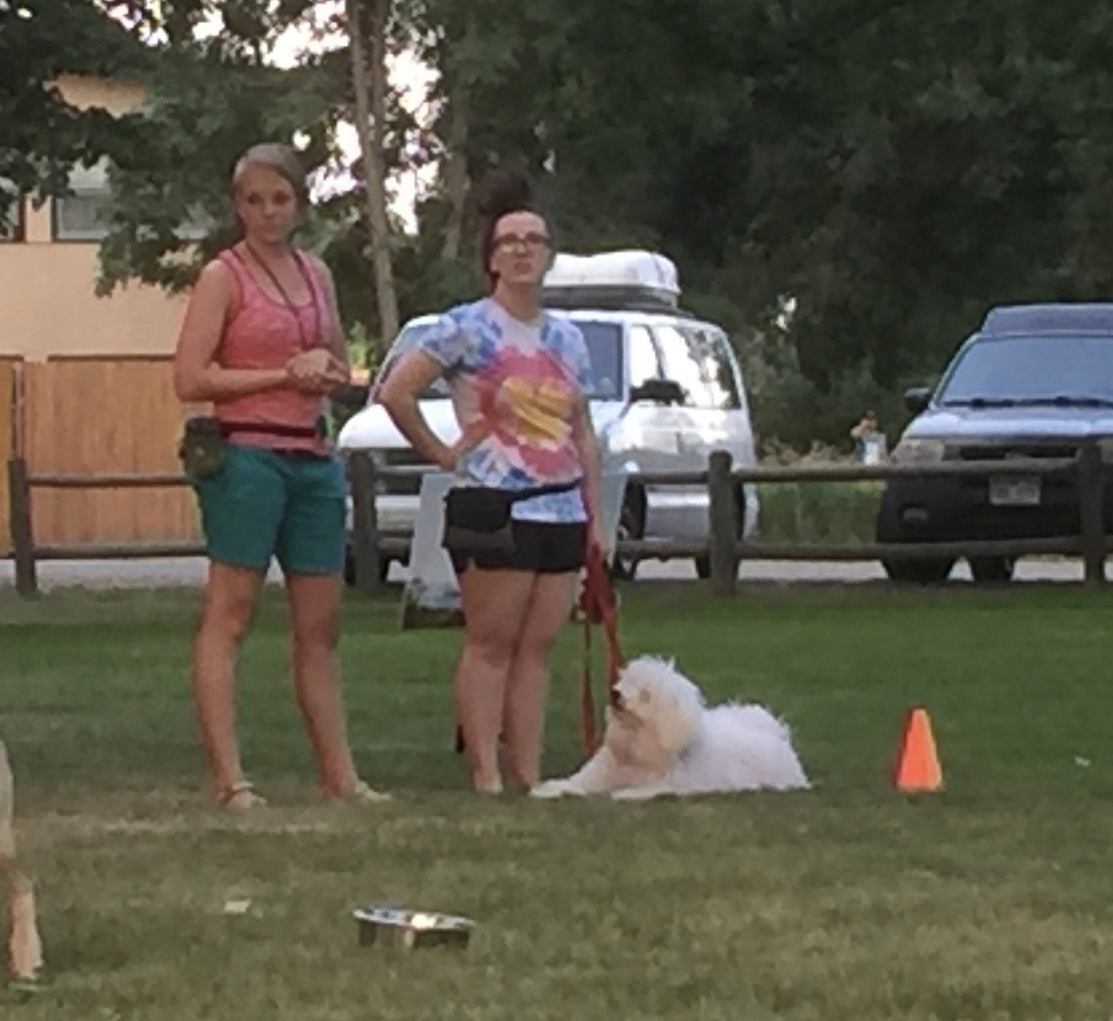Unlocking Adventure: An Interview with Sam and Her Awesome Aussie, Teddy
Have you ever felt like you and your furry best friend are speaking completely different languages? Or maybe you’re facing a behavior challenge that just feels… insurmountable? You’re definitely not alone. Many of us dream of a perfectly well-behaved companion, but the path to getting there can sometimes feel a bit like navigating a maze blindfolded.
We're so excited to share the incredible journey of Sam and her Australian Shepherd, Teddy. Their story is a fantastic example of how positive reinforcement training can transform challenges into triumphs and open up a world of adventure.
Ready to transform your dog's behavior and embark on new adventures together? Contact the Summit Dog Training team today with all your dog training questions – we're here to help!
Teddy poses stoically with his tongue out for a scenic photo-op!
SDT: Sam, can you start by telling us a bit about Teddy when you first brought him home?
Sam: I got Teddy when he was three, and at that time, he was pretty quiet and reserved. He was also about 30 pounds overweight, which made him slow and tired, not really like the energetic Aussie you’d expect. My initial focus was really just on helping him lose weight and bonding with him.
SDT: As Teddy lost weight, did you notice a shift in his personality?
Sam: As he lost weight, he became much more active and excited, really starting to act like a true Aussie. I was thrilled to see these changes in him, but I also realized I was kind of out of my depth with training. I could teach him the basics, but he was learning so quickly that I didn’t know how to keep up. His herding instincts started coming out more, and I knew I needed help guiding him to express that energy properly – almost like you would with a puppy, but he was three! For example, as he got more energy, he started chasing fast-moving things like bicyclists, skateboarders, and bunnies. He's always been a good dog, very sweet, and he wants to do everything with me, but he would just get really amped up and didn’t quite know how to manage his new energy.
SDT: It sounds like you quickly realized communication was key. How would you describe the "behavior challenges" you faced with Teddy?
Sam: It feels weird to describe these as "behavior challenges" because, for me, the challenges Teddy and I faced actually came from my not knowing how to communicate with him in a way that he understood. When he understands what I want him to do, he will typically do what I ask with enthusiasm. It was more about me learning how to speak his language.
SDT: That's a wonderful way to put it. Can you give us an example of a specific challenge and how you addressed it with Summit Dog Training?
Sam: One big one was his dislike of being handled. I realized this after I first got him and he kept getting yeast infections on his paws. When he got these, I would have to clean his paws and apply an antifungal spray. It would take two people to hold him still enough to do this. I felt horrible when I had to hold him, so I was very excited to take the Cooperative Care class with Summit. My focus with that class was to get to the point where I could fix his paws without holding him. I took that class a few years ago, but it made such a huge difference. Now, Teddy doesn’t need to be held to have his paws cleaned or sprayed. I can even trim his nails with a Dremel by myself! It’s incredible the trust we built.
SDT: That's amazing progress! You also mentioned getting into dog sports. How did training help with that?
Sam: Yes, within the past year, Teddy and I have started learning how to do dog sports – Agility, Rally, and Nose Work. He loves sports and is always so excited to do them. However, I realized that Teddy was so excited to work that he wasn’t able to chill out between turns. He was whiny, restless, and wouldn’t settle because he did not want to stop working.
SDT: And what did you do to address that "always on" mode?
Sam: I took the Work Mode to Nap Mode workshop and learned some really great techniques for how to get him to learn how to settle down after working. It took a few weeks, but I am impressed by the difference in his behavior. He can still be a little whiny between turns, but he’s much quieter and usually he’ll be laying down. To me, this is a huge win because it shows me that he knows what I want, and that he’s trying his best.
SDT: Teddy is such an awesome dog! Are there any behavior challenges that you’re still working on with him?
Sam: The food scavenging is one thing that we’re still working through, and will probably be working through forever, honestly. He is super food motivated, which is probably the product of his nature and amplified by the fact that he’s been on a diet to lose 30 pounds in the time that I have had him. He’s pretty notorious for seeing a piece of food on the ground (or something that looks like food, like a leaf) and diving towards it. Through Summit, we’ve learned techniques to help him to take a second to think about what he should do instead of immediately trying to eat the food. It’s an ongoing process, but we’ve definitely seen improvement.
SDT: You also mentioned some challenges with fast-moving objects early on. How is that now?
Sam: I don’t see this very often anymore, but Teddy used to lunge at fast-moving things like bikes, skateboards, bunnies, etc. I mentioned this once at a class, learned some techniques for how to handle this, and now I barely remember what it was like to worry about this. Teddy sees a biker or whatever, and he looks at me. It’s a huge relief.
SDT: When you started, what were your initial goals for training? And how have they evolved over time?
Sam: As I’ve taken classes with Teddy, my goals have definitely shifted. When I first started, I wanted to learn how to train my dog to do more than just sit, lay down, etc. I didn’t know it at the time, but looking back, I wanted to learn how to communicate with him in a way that he understood. After I learned how to do that, my goals shifted into getting Teddy’s Canine Good Citizen titles. Now he has earned four AKC titles: Canine Good Citizen, Canine Good Citizen Urban, Canine Good Citizen Advanced, and Trick Dog Novice all through Summit!
SDT: It sounds like Teddy truly transformed. How would you describe him after all your training with Summit?
Sam: Now, people are constantly commenting on how focused Teddy is on me and how well he behaves. This focus is one of the first things that we learned how to do in the Good Dog Basics class. It felt so strange at the time to reward him for doing nothing but looking at me, but since then, we’ve used this skill to focus around all types of distractions – like concerts, fire alarms, dogs barking, crowded elevators, and so on.
We’ll go to breweries or restaurants with dog-friendly patios, and we’ll use techniques that we’ve learned in the brewery dog class. There have been a few times where Teddy and I have left a restaurant’s patio after a meal and have heard people say, “I didn’t realize there was a dog out here.”
Also through Summit, Teddy and I started getting into dog sports and have not looked back. We’ve taken the Intro to Agility and the Level 1 Agility class a few years ago. We did all three levels of Nose Work last year, and we took Rally Novice and Rally Advanced a few months ago. When people say that you need to give your Aussie a job, they’re not kidding! Teddy is always so excited to do any sport that I show him.
An enthusiastic Australian shepherd, Teddy, leaps over an agility jump.
SDT: That’s absolutely incredible, Sam. What would you say to other dog parents who are considering training with Summit Dog Training?
Sam: I am so happy that I started taking Teddy to Summit! All of the instructors have been amazing and have helped me learn how my dog thinks and learns best. There have been times when me or Teddy have struggled with a concept, and the instructor was right there with a suggestion on how to tweak what I was doing to be successful.
I have really enjoyed the variety of classes that are offered at Summit because I’ve been able to choose classes that fit best with the topics that I am trying to learn about. When I was struggling to apply medicine to my dog’s paws, I was able to take the Cooperative Care class to learn how to get Teddy to opt in to his care. When I was struggling with recall, I took the Recall and Stays class. It’s been an amazing journey, and I highly recommend it!
SDT: Thank you so much, Sam, for sharing your and Teddy’s inspiring story!
Teddy on a winter adventure hike!
Sam's journey with Teddy is a shining example of what's possible with positive reinforcement and dedicated training. Her experience highlights the power of personalized support and a diverse range of classes that cater to specific needs and evolving goals. Whether you're dealing with a specific behavior challenge or simply looking to deepen your bond and explore new activities with your dog, there's a class and an instructor at Summit Dog Training ready to support you every step of the way. You can explore our group classes and class schedule here: www.summitdogtraining.com/signup
What adventures do you dream of having with your dog?
Ready to embark on your own training adventure? Discover how Summit Dog Training can help you and your dog thrive! Reach out to us today with any questions you have about our classes and positive reinforcement methods.























